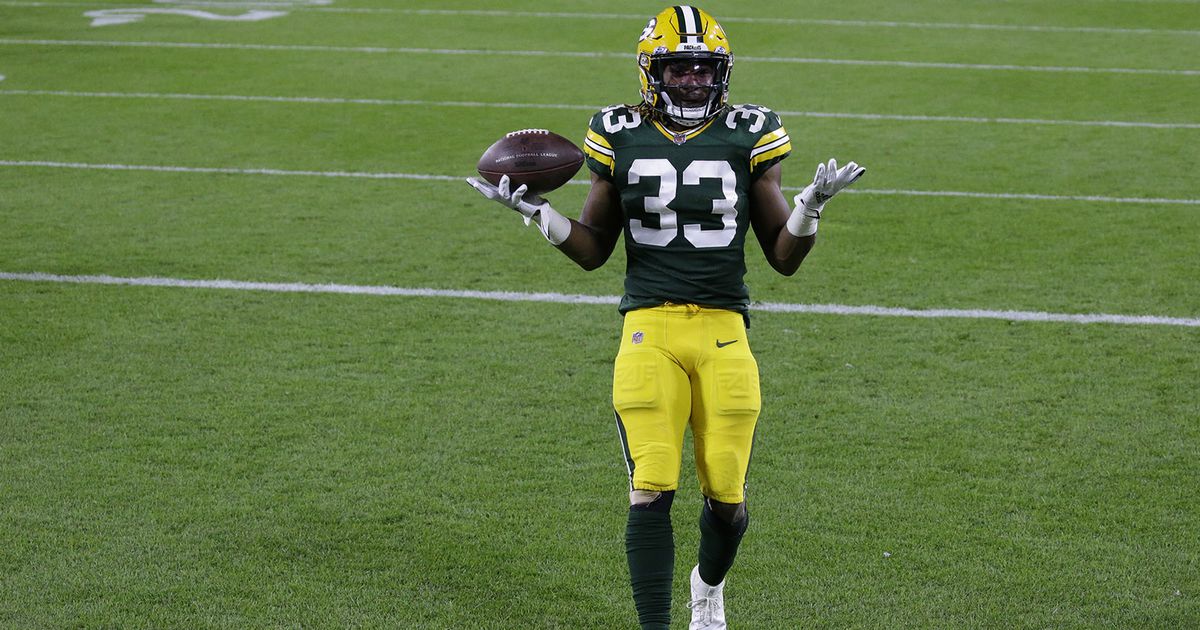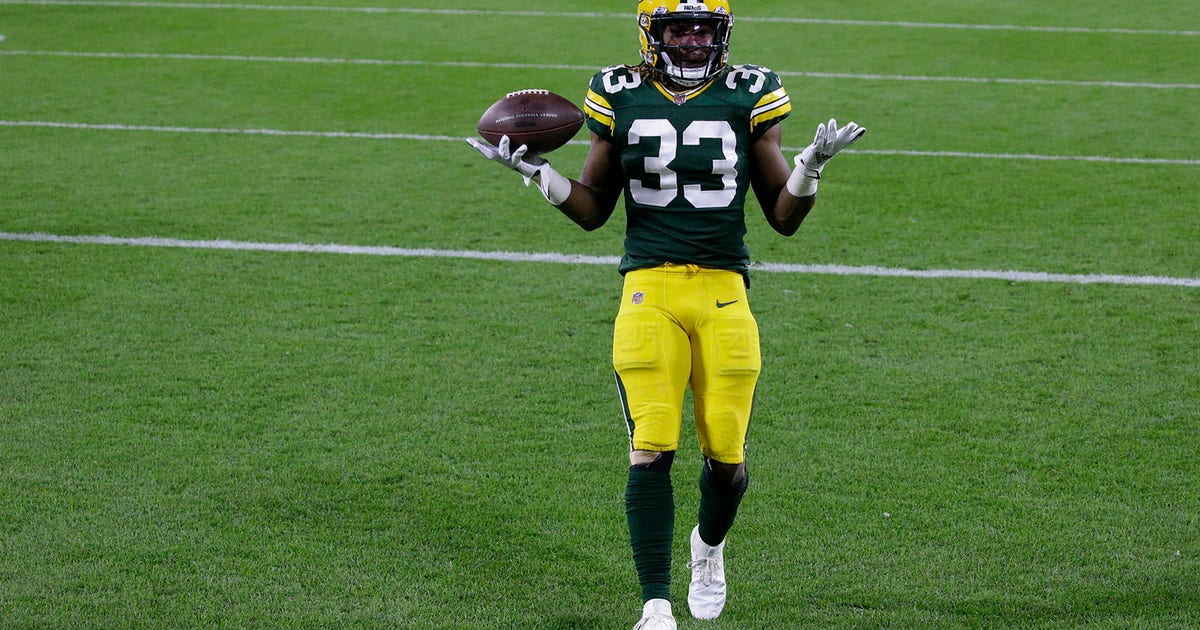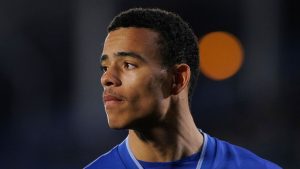Analysis: Why did Packers RB Aaron Jones last until Round 5 in 2017 NFL draft?


It’d be hard to argue that Green Bay’s Aaron Jones isn’t one of the top running backs in the NFL.
He averaged 5.5 yards per carry in each of his first two seasons, leading the league in 2018. Last season, no one had more than his 16 rushing touchdowns or 19 combined TDs. He also finished eighth in yards from scrimmage, with 1,558.
More Packers coverage
It’s been more of the same in 2020. Through five games, Jones is third in the NFL in rushing yards per game (93.5) and his 5.8 yards per carry is tied for fourth, although of the other four ahead or tied with him two are quarterbacks (Arizona’s Kyler Murray and Baltimore’s Lamar Jackson) and the other two have missed time with injuries (San Francisco’s Raheem Mostert and Cleveland’s Nick Chubb).
Jones also has six touchdowns (four rushing, two receiving). Every other player who has seven or six scores has played an additional game, as the Packers were off in Week 5.
All of this begs the question: Why did he last until the fifth round of the 2017 draft (not that the Packers are complaining)?
We’ve gone back and looked at some of the pre-draft coverage of Jones to try and figure out why he slipped so far, into Day 3.
First, though, here’s a list of all the running backs who were selected in the 2017 draft (player-round-overall selection):
Leonard Fournette, Jacksonville, 1-4
Christian McCaffrey, Carolina, 1-8
Curtis Samuel, Carolina, 2-40 (an RB at Ohio State but moved to WR)
Dalvin Cook, Minnesota, 2-41
Joe Mixon, Cincinnati, 2-21
Alvin Kamara, New Orleans, 3-67
Kareem Hunt, Kansas City, 3-86
D’Onta Foreman, Houston, 3-89
James Conner, Pittsburgh, 3-105
Samaje Perine, Washington, 4-114
Tarik Cohen, Chicago, 4-119
Joe Williams, San Francisco, 4-121
Donnel Pumphrey, Philadelphia, 4-132
Jamaal Williams, Green Bay, 4-134
Wayne Gallman, NY Giants, 4-140
Marlon Mack, Indianapolis, 4-143
Brian Hill, Atlanta, 5-156
Jeremy McNichols, Tampa Bay, 5-162
T.J. Logan, Arizona, 5-179
Aaron Jones, Green Bay, 5-182
Elijah McGuire, NY Jets, 6-188
De’Angelo Henderson, Denver, 6-203
Brandon Wilson, Cincinnati, 6-207
Devante Mays, Green Bay, 7-238
Khalfani Muhammad, Tennessee, 7-241
Elijah Hood, Oakland, 7-242
Chris Carson, Seattle, 7-249
Matthew Dayes, Cleveland, 7-252
Next, let’s take a look at his time at UTEP, where he played from 2013-16. Jones rushed for 1,321 yards on 242 carries (5.5 average) with 11 touchdowns as a sophomore in 2014. He played in only two games in 2015 due to tearing ligaments in his ankle but bounced back the next season and ran for 1,773 yards on 229 carries (7.7 average) with 17 TDs. Overall, Jones rushed 658 times with the Miners for 4,114 yards (6.3 average) with 33 TDs and caught 71 passes for 646 yards and seven TDs.
Jones was invited to the NFL Combine, where he did reasonably well, especially in the broad jump, 3-cone drill and vertical jump. His 40 time and speed score, however, were slightly below average for that year’s running back group.
The majority of draft analysts saw Jones as a Day 3 pick – although there were those who went against the grain. Here’s a sampling of where Jones was slotted among running backs for the Class of 2017 and some draft projections, when given, and some analysis, when offered (in order of rank):
Ryan Lopes of raidersbeat.com: No. 8 RB, round 3. “Jones does it all, and does it all really well. Conference play will come into question. He made up for that with supreme production. Backed up all the production with impressive workout numbers in Indianapolis. He needs more attention. I wouldn’t necessarily argue with anyone if they had him in their top five (running back) ranks.”
NFL.com’s Maurice Jones-Drew: No. 9 RB. “Jones is my sleeper in this draft. He’s versatile, runs good routes and moves well in the open field. He is tough to tackle and has decent speed. Jones is a well-rounded running back — as he touched the ball on nearly every play at UTEP — and is good at everything, but not great at one thing.”
Matt Waldman, Rookie Scouting Portfolio: No. 10 RB. “Jones’ size, strength, balance, agility, acceleration, burst through his cuts and receiving skill remind me of Priest Holmes, another underrated product from a Texas program. A lot of things will have to go right for Jones to legitimize those comparisons beyond the style of play, but I’d be surprised if he isn’t drafted by the sixth round. I expect him to make a roster and impress the staff with his ability to contribute right away.”
BNB Football: No. 12 RB.
Shane Alexander of Inside the Pylon: No. 15 RB but below his grouping of potential future starters.
Drafttek: No. 19.
WalterFootball.com: No. 20 RB, round 4-6.
Scott Wright of NFL Draft Countdown No. 22 RB.
NFLDraftScout.com: No. 25 RB, round 7 or free agent.
Bleacher Report’s Matt Miller: No. 26 RB, round 7 (labeled as a backup caliber). “Positives: He is excellent at getting what is blocked for him and can make tacklers miss in the open field. He showed off his lateral quickness at the combine … He has all the tools to develop into a three-down back. If there is a Day 3 sleeper in this class who can develop into a starter, it’s Jones. Negatives: Durability is an issue for Jones … While he dominated at UTEP and showed traits that you look for in an NFL back, he will face a big jump in terms of level of competition in the NFL, although he did play well versus both Texas and Arkansas. While Jones has great quickness, he lacks ideal top-end speed.”
Great Blue North Draft Report: No. 26 RB.
Fantasy Pros: n/a ranking but listed him as a fourth- or fifth-round pick. “Jones isn’t the biggest back, but we saw that work for Ray Rice who was the same build.”
Some sites didn’t have Jones ranked among their top running backs. Here’s a list with the number of running backs ranked in parentheses:
SI.com (15).
Pro Football Focus (20).
SB Nation (24), although Dan Kadar did list him as a potential sleeper.
NFL Draft Radio (28).
Pro Football Draft (31).
In some post-draft grading, Dieter Kurtenbach wrote “Aaron Jones could be a stud” but Spencer Hall tabbed the pick a C.
CONCLUSION
While there was no consensus opinion on Jones, the majority of draft experts thought Jones would go in Round 3 (which he did) although many offered high praise and saw him as a “sleeper.”
Again, why?
Yes, the 2017 running back draft was deep, especially compared to the previous year when just four running backs were selected in the first three rounds. But the 2018 draft, just like in 2017, saw eight RBs chosen in the first three rounds but seven of those came in rounds 1-2, whereas in ’17 it numbered only four (five if you include Samuel). In 2019, also eight were chosen in the first three rounds, but just two in the first two, and in this past year’s draft there were 10 running backs taken in the first three rounds, six in the first two rounds.
The reasons Jones slipped seem to be a combination of:
— Workload (658 carries in his three-plus seasons).
— Not playing at a Power 5 school, thus, in theory, not as good competition. Eleven of the backs chosen before Jones played in a Power 5 conference.
— Injury history. Any time a player misses all or most of a season it can throw up a red flag.
— His size and 40 time. Jones isn’t the biggest back – he wasn’t expected to plow over defenders at 5-foot-9, 208 pounds – and didn’t have special speed.
But, hey, draft experts aren’t always right. Then again, the Packers also waited until the fifth round to take Jones — and selected another running back before him in the fourth round.
Either way, Jones is proving everyone wrong and Green Bay, for one, is happy about that.






